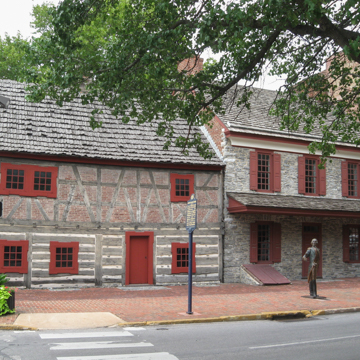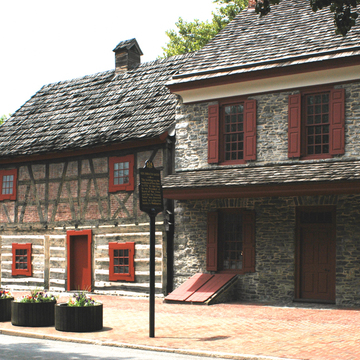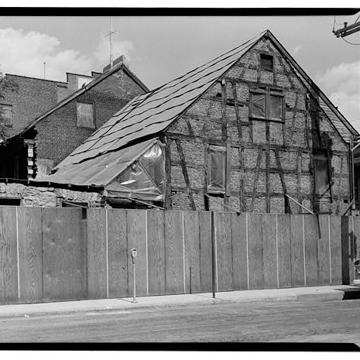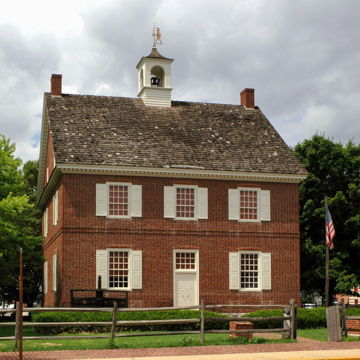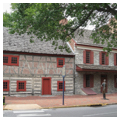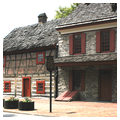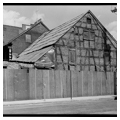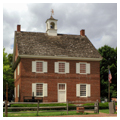German native Michael (or Martin) Eichelberger received permission to operate a tavern in 1741 and built a structure that might have seemed familiar in his native Karlsruhe. Above a base of massive square-hewn logs is a classic medieval timber frame, infilled with brick chinking that forms the west gable end. Together the steep roof profile and central chimney, the off-center door, and small windows are hallmarks of the German architecture before English Georgian fashion made inroads. Clapboarded for much of its history, the tavern was restored by the master of early period restoration, Brumbaugh, and is now owned by the York County Heritage Trust. In the rear yard is the early-nineteenth-century log house known as the Barnett-Bobb House. It was moved to the present site to save it from demolition. Across the street to the west is the re-created York Courthouse, a project for the nation's bicentennial, designed by local architect C. William Dize.
You are here
Golden Plough Tavern
If SAH Archipedia has been useful to you, please consider supporting it.
SAH Archipedia tells the story of the United States through its buildings, landscapes, and cities. This freely available resource empowers the public with authoritative knowledge that deepens their understanding and appreciation of the built environment. But the Society of Architectural Historians, which created SAH Archipedia with University of Virginia Press, needs your support to maintain the high-caliber research, writing, photography, cartography, editing, design, and programming that make SAH Archipedia a trusted online resource available to all who value the history of place, heritage tourism, and learning.







